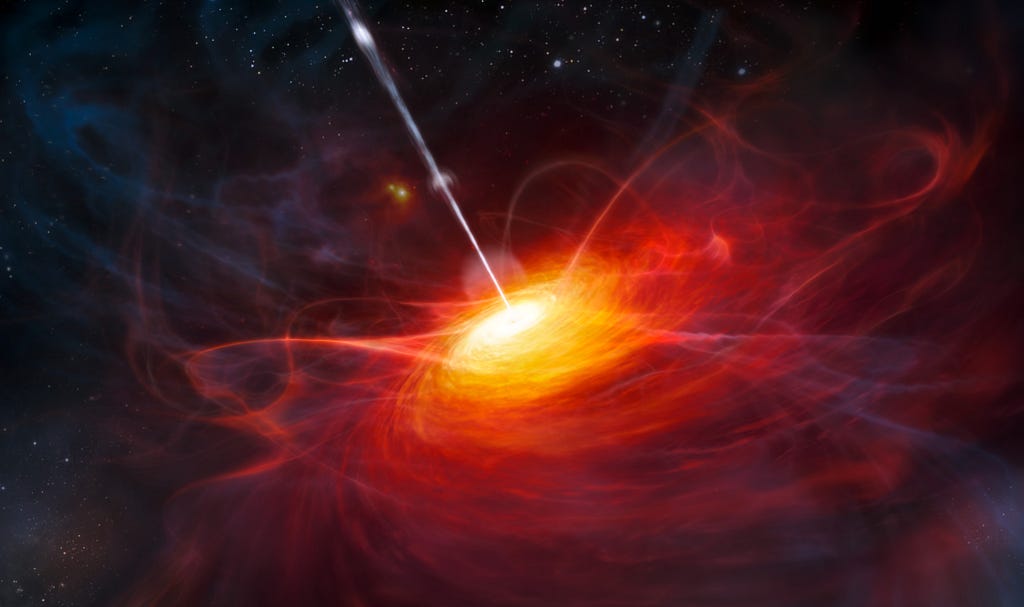
On February 1, 1993, about 32 years ago, I arrived on my first day as a junior faculty member to my new office at Harvard University. A young student was waiting by the door. He spoke politely and introduced himself: “My name is Daniel Eisenstein. I am a graduate student at the Harvard Physics department and was waiting for your arrival. Would you be willing to mentor me as a PhD student on theoretical research in cosmology?” I replied: “Of course. I will be delighted to work with you.” We scheduled our next meeting later that week to discuss the specifics of my idea for a research project.
In our second meeting, I reasoned: “The disks of galaxies like the Milky-Way reflect the amount of spin they received during their formation in response to the gravitational torques in their cosmological environment. Variations in these torques lead to a probability distribution of possible spins. This means that there should be a population of compact disks that could have potentially given birth to supermassive black holes in the early Universe. These disks were so compact that they quickly shrunk by turbulent viscosity to make a supermassive star which inevitably collapsed to a black hole.”
The idea came to my mind as a result of a paper I wrote around the same time on the birth of quasars with Fred Rasio, who was a postdoc with me at Princeton. Quasars are supermassive black holes with masses of up to tens of billions of solar masses. They are shining bright by converting to radiation about a tenth of the rest mass of infalling gas at the centers of galaxies. Ironically, these black holes — invisible when left on their own, are the most brilliant beacons of light when gas heats up near them and radiates its gravitational binding energy as it spirals into them like water going down the drain.
As a bright starting scientist, Daniel went ahead and worked out a theoretical model that demonstrated the validity of this idea. We published the results in a 1995 paper that was cited 180 times since then. One of the latest citations of this paper was in a research note that I published alone in 2024, making the connection between the population of low-spin disks that we theorized with Daniel and a new population of Little Red Dot (LRDs) galaxies discovered by the Webb telescope in 2023. LRDs are compact red galaxies that appeared merely 600 million years after the Big-Bang, with a total mass of about a tenth of the Milky-Way galaxy. The observers who discovered LRDs suggested that they constitute the birth sites of the supermassive black holes that power quasars. In my 2024 note, I suggested a link between the observed size and orbital speed of LRDs and the low-spin disks that we studied theoretically with Daniel 3 decades earlier. My note received one citation so far from a subsequent paper which confirmed that the small sizes and high densities of LRDs could explain their broad emission lines as I anticipated in my note.
Now, the brilliant research fellow Fabio Pacucci followed this argument quantitatively in collaboration with me. In our forthcoming paper, Fabio and I show that the observed compact size and broad lines of LRDs are fully consistent with the compact disks expected in low-spin galaxies. We find agreement between the probability tail of low-spin systems and the observed fractional abundance of LRDs relative to the rest of the galaxy population in the early Universe.
What is the lesson from this 32-year-long journey? First, good ideas can be forgotten by the time they get validated, especially if they were proposed decades earlier. Second, when observers make an exciting new discovery, they often do not relate it to past theoretical predictions. In the long arc of history, science is highly inefficient. If I were to die a few years ago, I doubt that anyone would have noticed the relevance of my 1995 paper with Daniel to the discovery of LRDs. Daniel himself moved on to become one of the leading observational cosmologists in the world and won the prestigious Shaw Prize in 2014 for his observational discovery of the imprint of Baryon Acoustic Oscillations as wrinkles in the large scale distribution of galaxies. He also followed me as chair of the Harvard Astronomy department over the past 5 years.
My experience is not new. In 1952, Otto Struve published a research note about the feasibility of detecting Jupiter-mass planets in close proximity to their host star. For more than 4 decades, Struve’s proposal was ignored. But in 1995, Michel Mayor and Didier Queloz discovered a Jupiter-mass companion to the Solar-type star 51 Pegasi. Both researchers shared the Physics Nobel Prize in 2019 for their pioneering discovery. However, their 1995 paper does not reference Struve’s proposal. Struve’s idea was forgotten by the time Mayor and Queloz confirmed it.
It is often argued that science is based on evidence and the human factor plays a secondary role in the progress of scientific knowledge. However, the reality is that scientists decide which evidence they wish to seek. If they choose not to search for hot Jupiters near Sun-like stars because they insist that Jupiter-mass planets must form far away from their host star based on the Solar system, then they would never discover hot Jupiters and their prejudice will be justified by the lack of contrasting evidence. If they choose not to search for technological artifacts near Earth from extraterrestrial civilizations, then they would never discover them. Ignorance is self-sustaining in a scientific culture where those who dare to think outside the box are marginalized and ignored.
The trademark of a scientific culture which is hostile to innovators is a slowdown in breakthrough discoveries. This week, the new recipient of the Breakthrough Prize in Fundamental Physics, Gerard ‘t Hooft, told the Scientific American reporter, Lee Billings: “I would like to advise the new generation of scientists: … The real reason why there’s nothing new coming is that everybody’s thinking the same way! … I’m a bit puzzled and disappointed about this. Many people continue to think the same way — and the way people now try to introduce new theories doesn’t seem to work as well. ”
In the same spirit, I advised first-year students at Harvard College this week: “Maintain your childhood curiosity and never pretend to be the adult in the room.” Scientists would be far more efficient at making discoveries if they dared to take risks and remember those who pioneered alternatives to the beaten path.
ABOUT THE AUTHOR

Avi Loeb is the head of the Galileo Project, founding director of Harvard University’s — Black Hole Initiative, director of the Institute for Theory and Computation at the Harvard-Smithsonian Center for Astrophysics, and the former chair of the astronomy department at Harvard University (2011–2020). He is a former member of the President’s Council of Advisors on Science and Technology and a former chair of the Board on Physics and Astronomy of the National Academies. He is the bestselling author of “Extraterrestrial: The First Sign of Intelligent Life Beyond Earth” and a co-author of the textbook “Life in the Cosmos”, both published in 2021. The paperback edition of his new book, titled “Interstellar”, was published in August 2024.